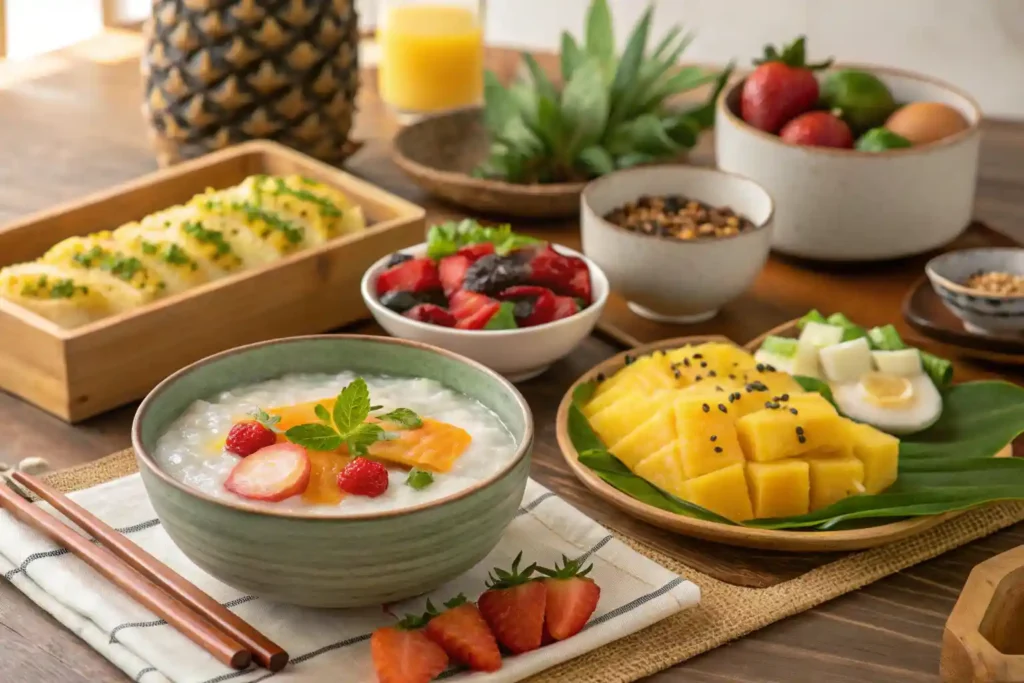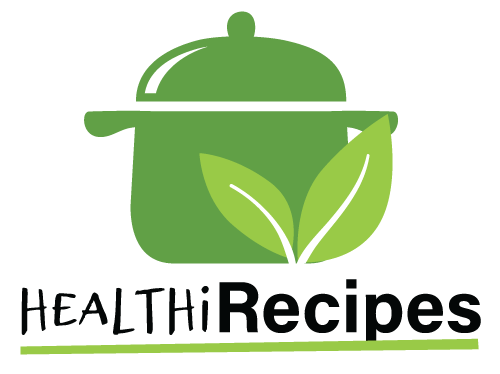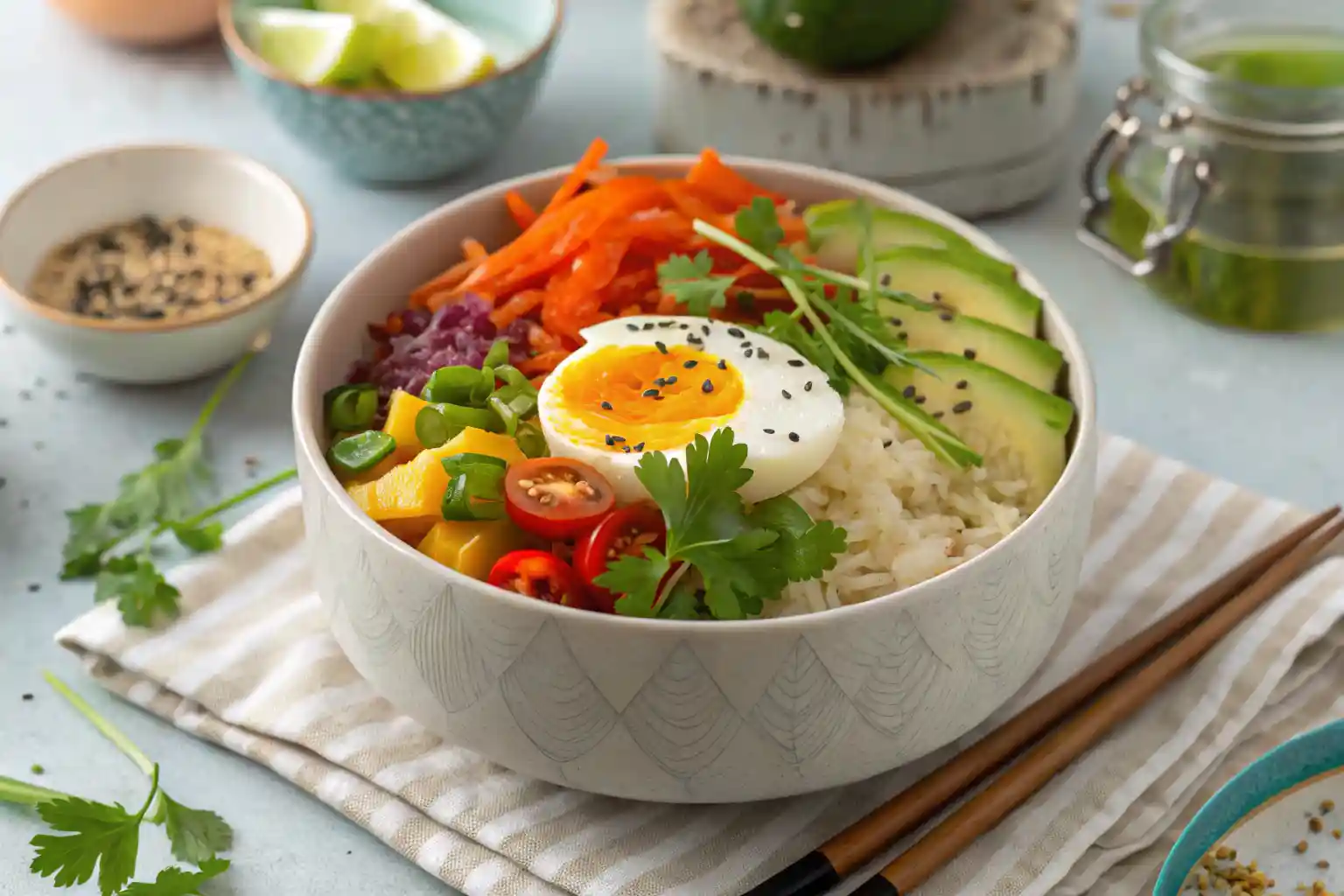Breakfast is often called the most important meal of the day, and Asian breakfasts offer a delightful variety of flavors and nutrients. In this article, we will explore quick and easy Asian breakfast recipes that are perfect for busy mornings.
Table of contents
1. What is a Typical Asian Breakfast?

A typical Asian breakfast varies significantly across different countries, reflecting the rich culinary traditions of the continent. Here are some common elements:
- Rice and Noodles: Many Asian breakfasts feature rice or noodles as a staple. For instance, congee (rice porridge) is popular in China, while noodles are often enjoyed in Japan and Korea.
- Protein Sources: Eggs, tofu, and fish are common protein sources. Dishes like tamagoyaki (Japanese omelet) and grilled fish are frequently served.
- Vegetables: Fresh vegetables are often included, either as side dishes or incorporated into main meals. Common choices include bok choy, spinach, and pickled vegetables.
- Flavorful Sauces: Soy sauce, chili paste, and sesame oil are frequently used to enhance the flavors of breakfast dishes.
Nutritional Benefits
Asian breakfasts are not only delicious but also nutritious. They often include a balance of carbohydrates, proteins, and healthy fats, providing sustained energy throughout the day. Incorporating a variety of ingredients ensures that you receive essential vitamins and minerals.
2. What is Japanese Main Breakfast?
Japanese breakfasts are known for their simplicity and balance. A traditional Japanese breakfast typically includes:
- Steamed Rice: A staple in Japanese cuisine, rice is often served plain or with toppings.
- Miso Soup: This savory soup made from fermented soybean paste is a common accompaniment, providing probiotics and flavor.
- Grilled Fish: Fish, such as salmon or mackerel, is often grilled and served as a protein source.
- Pickled Vegetables: Tsukemono (pickled vegetables) add a crunchy texture and tangy flavor to the meal.
Quick Japanese Breakfast Ideas
For those busy mornings, here are some quick Japanese breakfast ideas:
- Tamagoyaki: This sweet, layered omelet can be made in advance and enjoyed cold or warm.
- Onigiri: Rice balls filled with various ingredients (like tuna or pickled plum) are easy to prepare and portable.
- Instant Miso Soup: Available in convenient packets, instant miso soup can be prepared in minutes.
Health Benefits of Japanese Breakfast
Japanese breakfasts emphasize fresh ingredients and portion control, contributing to a balanced diet. The inclusion of fish provides omega-3 fatty acids, while fermented foods like miso support gut health.
3. What is the Healthiest Chinese Breakfast?
Chinese breakfasts vary widely by region, but many focus on wholesome ingredients. Some popular healthy options include:
- Congee: This rice porridge can be customized with various toppings, such as green onions, pickled vegetables, or century eggs.
- Steamed Buns: Filled with vegetables or lean meats, steamed buns are a nutritious and filling option.
- Vegetable Stir-Fry: Quick stir-fried vegetables can be served with rice or noodles for a balanced meal.
Nutritional Insights
Chinese breakfasts often incorporate whole grains, lean proteins, and plenty of vegetables, making them a healthy choice. The use of ginger and garlic in cooking also adds anti-inflammatory properties.
Quick Recipes for Busy Mornings
Here are a few quick recipes for healthy Chinese breakfasts:
- Vegetable Congee: Cook rice with extra water until it reaches a porridge-like consistency. Top with sautéed vegetables and a drizzle of soy sauce.
- Egg and Vegetable Fried Rice: Use leftover rice, scramble in some eggs, and add your choice of vegetables for a quick meal.
- Steamed Vegetable Buns: Purchase pre-made buns and steam them for a quick, nutritious breakfast.
4. What is in a Filipino Breakfast?
Filipino breakfasts are hearty and often include a combination of protein, carbohydrates, and vegetables. Common components include:
- Longsilog: A sweet pork sausage served with garlic rice and a fried egg.
- Tapsilog: Marinated beef served with garlic rice and a fried egg.
- Tocino: Sweet cured pork, typically served with rice and eggs.
Quick Filipino Breakfast Ideas
For busy mornings, consider these quick Filipino breakfast ideas:
- Overnight Tapsilog: Marinate beef overnight and quickly fry it in the morning.
- Tocino Wrap: Use tocino in a tortilla wrap with scrambled eggs and vegetables for a portable breakfast.
- Garlic Rice: Prepare garlic rice in advance and reheat it for a quick side dish.
Nutritional Aspects
Filipino breakfasts are often rich in protein and carbohydrates, providing energy for the day. However, it’s essential to balance these meals with vegetables to enhance their nutritional value.
5. What is the Common Breakfast in China?
Chinese breakfasts are diverse and vary by region, but they often include a mix of savory and sweet dishes. Some common breakfast items include:
- Jianbing: A popular street food, these Chinese crepes are filled with eggs, scallions, and various sauces.
- Soy Milk and Youtiao: A traditional breakfast pairing, where crispy fried dough sticks (youtiao) are dipped in warm soy milk.
- Steamed Dumplings: Filled with meat or vegetables, these dumplings are a nutritious and filling option.
Regional Differences
Breakfast in China can differ significantly from one province to another. For example:
- Northern China: Hearty dishes like steamed buns and congee are common.
- Southern China: Dim sum and rice rolls are popular breakfast choices.
- Eastern China: Light breakfasts often include soy milk and youtiao.
Quick and Easy Recipes
Here are some quick recipes for a typical Chinese breakfast:
- Jianbing:
- Ingredients: Flour, water, eggs, scallions, and your choice of fillings (like ham or cheese).
- Directions: Mix flour and water to create a batter. Pour onto a hot skillet, crack an egg on top, and sprinkle with scallions. Cook until set, then fold and serve.
- Soy Milk with Youtiao:
- Ingredients: Store-bought soy milk and youtiao.
- Directions: Heat soy milk and serve with crispy youtiao for dipping.
- Steamed Dumplings:
- Ingredients: Frozen dumplings (available at Asian grocery stores).
- Directions: Steam according to package instructions and serve with soy sauce or vinegar.
6. What is Standard Malaysian Breakfast?
Malaysian breakfasts are known for their rich flavors and variety. Some standard breakfast dishes include:
- Nasi Lemak: Considered the national dish, it consists of rice cooked in coconut milk, served with sambal, fried anchovies, peanuts, and boiled eggs.
- Roti Canai: A flaky flatbread often served with dhal (lentil curry) or sugar.
- Kaya Toast: Toasted bread spread with kaya (coconut jam) and butter, typically served with soft-boiled eggs.
Quick Malaysian Breakfast Ideas
For busy mornings, here are some quick Malaysian breakfast ideas:
- Nasi Lemak Wrap: Use leftover nasi lemak ingredients to create a wrap with rice, sambal, and protein.
- Roti Canai with Eggs: Quickly fry a roti canai and serve it with scrambled eggs for a filling meal.
- Kaya Toast: Prepare kaya toast in advance and enjoy it with a cup of coffee or tea.
Nutritional Benefits
Malaysian breakfasts often combine carbohydrates, proteins, and healthy fats, making them satisfying and energizing. The use of coconut milk in nasi lemak provides healthy fats, while the variety of dishes ensures a range of nutrients.
7. Quick and Easy Asian Breakfast Recipes
Now that we’ve explored various Asian breakfasts, let’s dive into some quick and easy recipes that you can prepare in no time.
Recipe Ingredients
Here’s a list of common ingredients you can use for various Asian breakfast recipes:
- Grains: Rice, noodles, and flour (for pancakes or crepes).
- Proteins: Eggs, tofu, fish, and lean meats.
- Vegetables: Spinach, bok choy, carrots, and bell peppers.
- Condiments: Soy sauce, sesame oil, and chili paste.
Directions for Quick Recipes

- Vegetable Fried Rice:
- Ingredients: Cooked rice, mixed vegetables, soy sauce, and eggs.
- Directions: In a pan, heat oil, add vegetables, and stir-fry. Push to the side, scramble eggs, then mix in rice and soy sauce. Cook until heated through.
- Korean Kimchi Fried Rice:
- Ingredients: Cooked rice, kimchi, green onions, and eggs.
- Directions: Sauté kimchi in a pan, add rice, and stir-fry. Create a well in the center, crack an egg, and scramble. Top with green onions.
- Simple Congee:
- Ingredients: Rice, water, and toppings (like green onions, soy sauce, or century eggs).
- Directions: Cook rice in a large pot with plenty of water until it reaches a porridge-like consistency. Serve with desired toppings.
- Tamagoyaki (Japanese Omelet):
- Ingredients: Eggs, soy sauce, and sugar.
- Directions: Whisk eggs with soy sauce and sugar. Pour a thin layer into a hot pan, cook, roll, and repeat until all egg mixture is used.
8. Conclusion & FAQs
In conclusion, Asian breakfasts are not only diverse and flavorful but also offer a wealth of nutritional benefits. From the hearty and satisfying Filipino breakfasts to the light and balanced Japanese meals, there is a wide range of options to suit every palate and lifestyle.
By incorporating quick and easy recipes into your morning routine, you can enjoy the rich flavors of Asian cuisine without spending too much time in the kitchen. Whether you opt for a simple bowl of congee, a delicious tamagoyaki, or a hearty nasi lemak, these meals can provide the energy and nutrients needed to kickstart your day.
Embrace the variety of Asian breakfast options available, and don’t hesitate to experiment with different ingredients and flavors. With a little preparation, you can enjoy a delicious and nutritious breakfast that will keep you satisfied throughout your busy morning.
For more breakfast ideas, check out our Healthy Breakfast Burrito for a quick meal option, explore Discover the Best Healthy Breakfast Meats for a Nutritious Start for protein-rich choices, or try our Apple Breakfast Recipes for a refreshing twist on breakfast.

FAQs
1. What is a typical Asian breakfast?
A typical Asian breakfast varies by region but often includes rice, noodles, eggs, and vegetables. Common dishes include congee in China, tamagoyaki in Japan, and nasi lemak in Malaysia.
2. What is Japanese main breakfast?
A traditional Japanese breakfast typically consists of steamed rice, miso soup, grilled fish, and pickled vegetables. It emphasizes fresh ingredients and balanced nutrition.
3. What is the healthiest Chinese breakfast?
The healthiest Chinese breakfast often includes congee topped with vegetables, steamed buns, and stir-fried greens. These options provide a good balance of carbohydrates, proteins, and vitamins.
4. What is in a Filipino breakfast?
A Filipino breakfast usually features a combination of protein, carbohydrates, and vegetables. Common dishes include longsilog (sweet pork sausage), tapsilog (marinated beef), and tocino (sweet cured pork).
5. What is the common breakfast in China?
Common breakfasts in China include jianbing (Chinese crepes), soy milk with youtiao (fried dough), and steamed dumplings. These dishes vary by region and often include a mix of savory and sweet flavors.
6. What is standard Malaysian breakfast?
A standard Malaysian breakfast often includes nasi lemak (coconut rice with sambal), roti canai (flaky flatbread), and kaya toast (toasted bread with coconut jam). These dishes are rich in flavor and nutrients.

